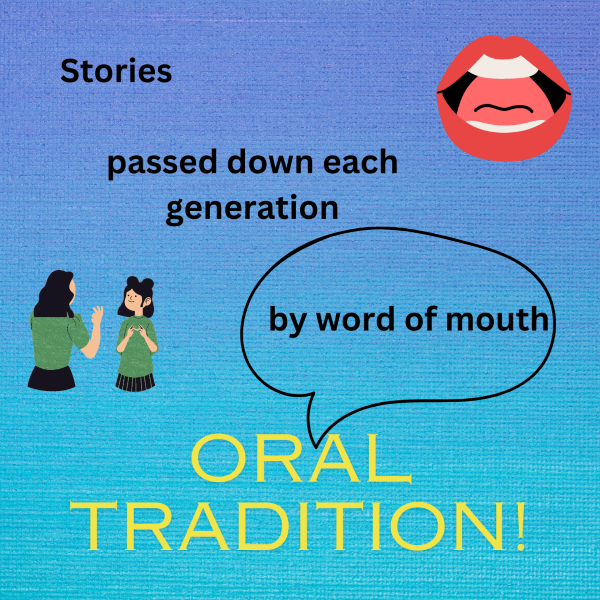
People passed the content of the Old Testament down by word of mouth for many years. The process of sharing stories verbally is called Oral Tradition.
Oral Tradition
Have you ever played the game “telephone,” or observed people doing so? One person thinks up a statement, whispers it to the next person, who whispers it to the next person until everyone in the group has heard it. While at times, the last person knows what the first person said, the statement often comes out differently. The statement might start with “Julio loves spaghetti,” and depending on how many participants repeat it, may end with something like “June likes a Jedi.”
Telephone helps us understand how stories that are passed down for many years can change. The game usually has an unimportant statement. If the first person truthfully whispers, “My father has cancer,” I suspect that this information would pass carefully from person to person. When a story matters, the essential points of the story may stay the same but less significant details may shift.
Family’s Oral Tradition
If a story is passed down for generations, its essence may stay the same but details can shift. It might not change if it is a more important story. For example, my mother said that my great-grandfather’s uncle told him to meet him at the docks when he was eleven. Then they boarded a ship bound for the United States. My great-grandfather was unable to say goodbye to his family and never returned to Ireland.
I might not be correct that he was eleven. Perhaps he was nine. If so, the essence of the story would remain the same. My great-grandfather’s uncle took him from Ireland to the United States without permission from his parents, He also did not allow my great-grandfather to say goodbye to his family.
How might this story be understood today? Some might question why his uncle took his nephew without his parent’s permission. They might think that there are no circumstances in which this would be acceptable. Others could say that the uncle was trying to help his nephew. I think that this probably happened years after the great famine. I think that they probably emigrated to the United States in the 1870s or so. Between 1850 and 1929, about 4 million Irish emigrated to the United States in the post-famine era.
If this was a biblical story, a scholar might look to the time period and assess whether the story lines up with history . In this case, the story has a greater likellihood of being true rather than a legend, for example.
Biblical Scholarship
Perhaps you notice that there are two Creation accounts in Genesis as well as multiple stories about Noah and the ark. What are we to make of these? Believe it or not, it appears that the editors of the Bible took stories from different sources and rather than choosing one over the other, left them both in.
This duplication and different sources are some of the reasons why I do not think reading the Bible word for word works. One of the main sources in Genesis came from the Southern Kingdom. Another came from the Northern Kingdom. Similar stories may have had different interpretations based on diverse experiences.
Scholars believe that the sources came from different areass, separate perspectives, and different centuries.
When faced with two or more versions of the same story, it is difficult to read them literally.













